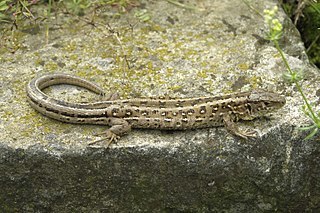What Types of Wildlife Thrive on Heathland?
Heathland provides a habitat for many plant and animal species that cannot survive elsewhere. As well as plants such as gorse and heathers, numerous invertebrates make their homes on heathland. Some species are very rare such as the heath grasshopper, the dusky cockroach, the potter wasp, and the ladybird spider. The Silver-studded blue butterfly also makes its home amongst the heather as do 3 species of dragonfly which are only found on lowland heaths.
Many mammals such as rabbits, weasels, stoats and hares make heathlands their home and this habitat also supports all six of the UK’s reptile species. Heaths provide warm, open areas for reptiles to bask and lay their eggs, as well as being a source of invertebrate food. The sand lizard is one of the UK’s rarest reptiles, due to habitat loss and now survives in only a few heathland areas, mainly in Dorset, Hampshire and Surrey. Living in similar locations, as it favours the same type of habitat, is the smooth snake, which is also very rare. Adders, grass snakes and slow worms also live on heathland, as do common lizards. Amphibians like the natterjack toad need the warm, shallow pools typical of lowland heaths to breed.

